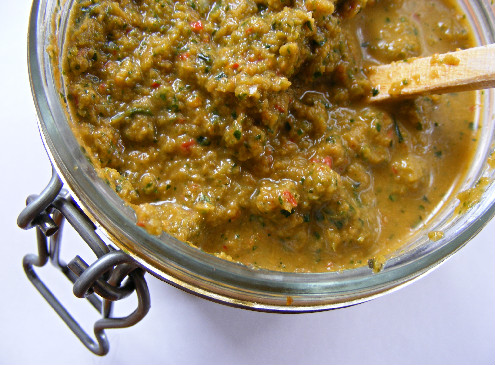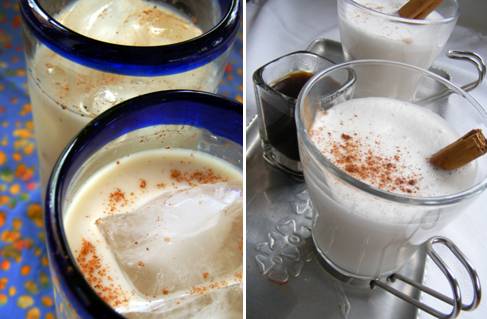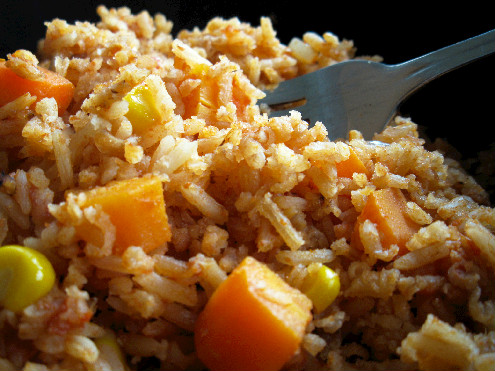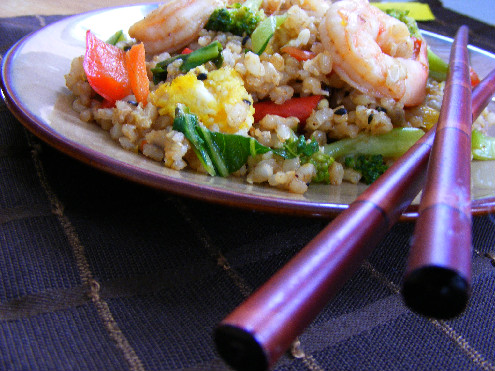Sofrito – Puerto Rican Fresh Bouillon
Wednesday, April 7th, 2010Sofrito is the essence in Puerto Rican dishes like arroz con pollo – the next rice recipe in the queue. It’s also the foundation of flavor for beans, soups and other good eats.
What is sofrito? It’s a blend of fresh vegetables and herbs. You could liken it to fresh bouillon because it can be added to a dish to round it out and give it depth.
The idea to liken this fresh base to a “bouillon” was inspired by Heidi at 101 Cookbooks. She posted a recipe for homemade bouillon a few months ago. Her version had carrots, fennel, and a slew of other veggies and herbs – preserved with salt. When I read her post, I immediately reconceptualized a way to explain the culinary use of sofrito.
This sofrito is Puerto Rican. It is not spicy. But, it is flavorful! The main ingredients include: onion, peppers (bell pepper and aji dulce), garlic, cilantro and recao.
In Puerto Rican cookery, recao is also referred to as culantro. It is an herb typically found in tropical areas like Puerto Rico, the Caribbean and Mexico. It has a mild green flavor that is reminiscent of, but not as strong as cilantro.
Look for it in the fresh herb section of ethnic markets labeled as spirit weed, fit weed, cilantro extranjero, cilantro habanero, or in Asian/Vietnamese markets as ngo gai. I managed to score some at Rancho Liborio, here in Denver.
If you are a sofrito purist and have access to aji dulce, yours will likely be greener in hue. I used a red pepper, which gave it a reddish tinge.
This fresh bouillon is a great addition to your kitchen staples, especially if you’re big on Latino and Caribbean food. It can be made in large batches and frozen in smaller portions (such as ice cube trays) for convenience. For vegetarians and vegans, it’s a nice alternative to oomph up flavor. And, another huge plus, there’s no salt.
Try it! If you make sofrito and have any interesting uses for it, please leave a comment.











